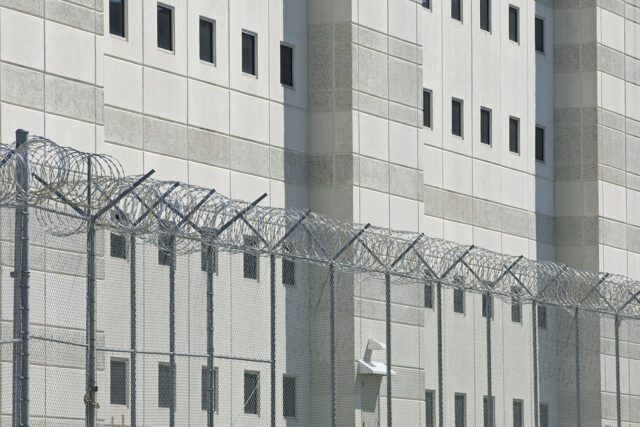As jail populations have shrunk due to California’s criminal justice reforms, most county jail systems are seeing pressure on the capacity of their facilities ease. Past overcrowding had prevented law enforcement from detaining and holding suspects—and it has been a factor cited around a recent rise in retail theft in urban areas. A close look at jail populations in the wake of the COVID-19 pandemic reveals that overcrowding is now limited to a handful of counties.
A jail’s rated capacity is the number of beds available to hold general population inmates, not including medical and mental health beds. Jails have historically faced capacity issues—or overcrowding—requiring counties to release people early. Over $2 billion in state funding helped counties build new beds, but capacity challenges remained. Some small rural counties without jails contract with other counties, while counties with smaller populations generally have just one jail—but some have large systems. For example, Los Angeles operates eight facilities with an overall system capacity above 12,000 beds.
The jail population swelled after California implemented Public Safety Realignment (October 2011), when counties became responsible for holding inmates on parole and probation violations, as well as those serving time for non-serious, non-violent and non-sexual felonies (as defined by statute). By June 2014, the population peaked at about 83,000 inmates, or about 5,000 above the statewide rated capacity. As a result of overcrowding, 13,000 inmates were released early; 32 counties reported at least one capacity-constrained release.
Proposition 47 (November 2014) reclassified certain property and drug offenses from felonies to misdemeanors, and the jail population quickly dropped by about 10,000. It hovered between 70,000–75,000 inmates until early 2020, then fell another 12,000 in the wake of criminal justice responses to the pandemic. As of September 2023 (the most recent month of data), the jail population was just under 60,000. Despite these decreases, 23 counties still reported capacity-constrained releases, for a total of 5,700.

In October 2014, 75 facilities—or 61%—had populations above 90% capacity, a level often cited as a more manageable and safe level of operation than full capacity; 53 facilities were over full capacity—or 43% of all facilities. After Prop 47 passed, around 40% of jails had populations above 90% capacity. After pandemic changes, only 19% of all jails are now above 90% capacity.

In October 2014, 32 counties had jail systems above 90% capacity. The picture is vastly different today, when only 5 county jail systems are above 90% capacity: Amador (120%), Los Angeles (102%), Fresno (101%), Yolo (99%), and Siskiyou (94%). However, 7 counties report at least one facility over full capacity: Amador, Fresno, Los Angeles (4), Riverside (2), San Diego, Santa Barbara, and Stanislaus.

We assume that sheriffs are able to staff jails up to rated capacity but due to data limitations, we can’t be sure. And given recent decreases in law enforcement staffing, this may not always be the case. Jail staff may have been reassigned or decreased through attrition or layoff, creating a potentially smaller operational capacity.
With jail populations falling and jail capacity expanding, overcrowding has eased; county jails now may be able to handle fluctuations in enforcement—including arrests and charging decisions—if staffed to rated capacity. Still, some counties operate jails well above capacity—including Los Angeles and Fresno—which makes decisions about enforcement and jail bookings challenging. Contracting for beds with nearby counties is one possible solution, especially if the capacity needs are temporary. For longer-term solutions, counties will also need to consider mental health, medical, educational, and other services that can help prepare inmates for successful reentry into our communities.
Topics
Criminal Justice jails mental health Proposition 47Learn More

California’s County Jails

Law Enforcement Staffing in California

Testimony: Crime Data on Retail Theft and Robberies in California

County Jails House Fewer Inmates, but Over Half Face Mental Health Issues




